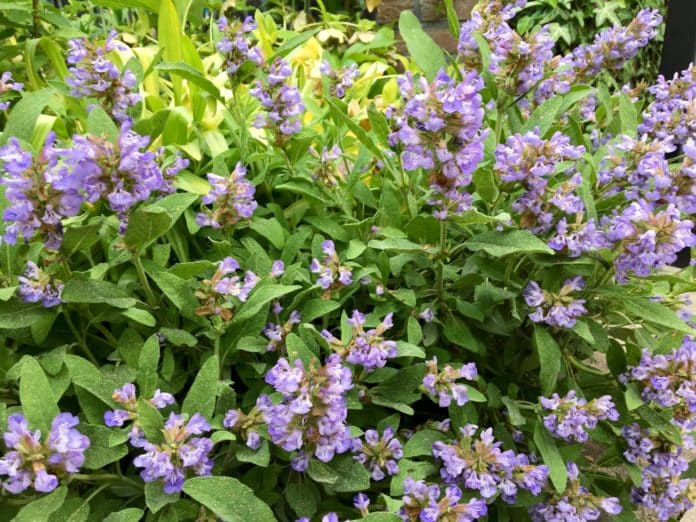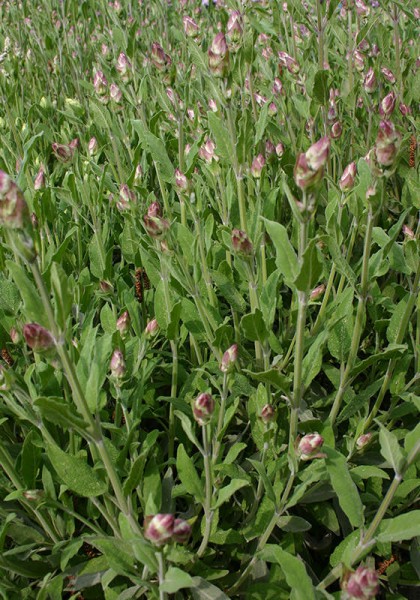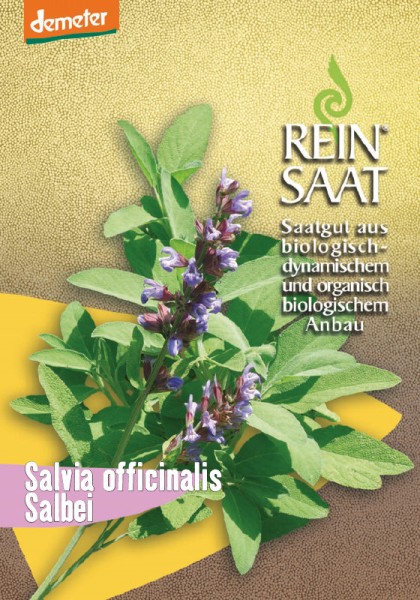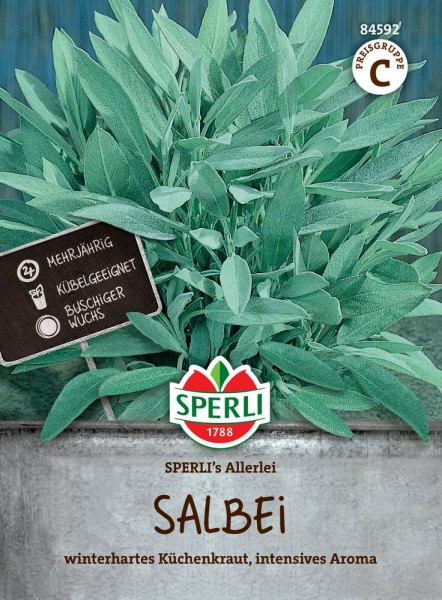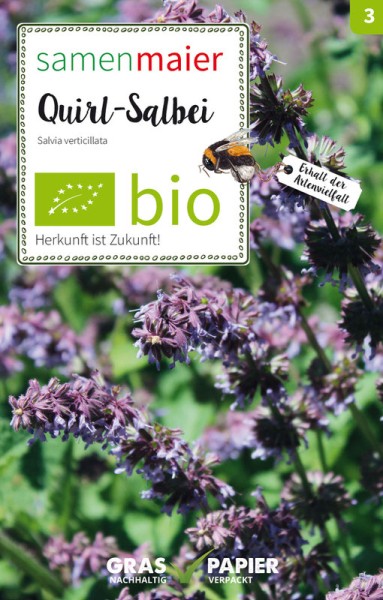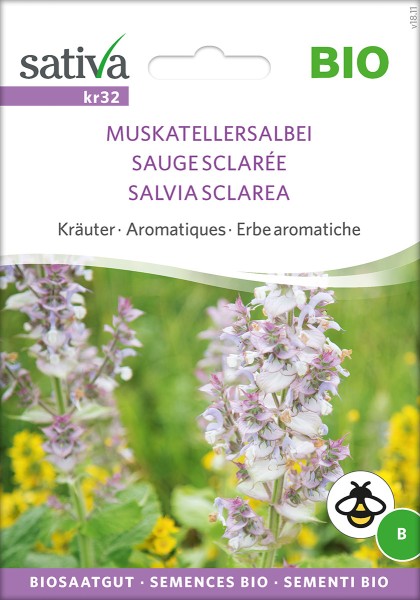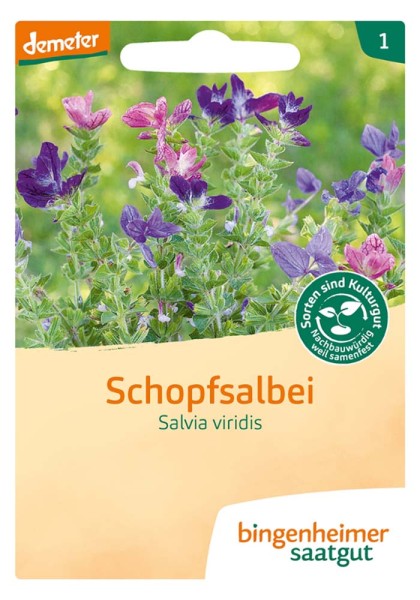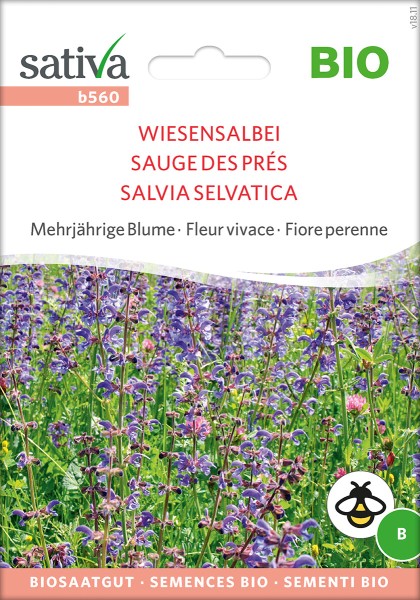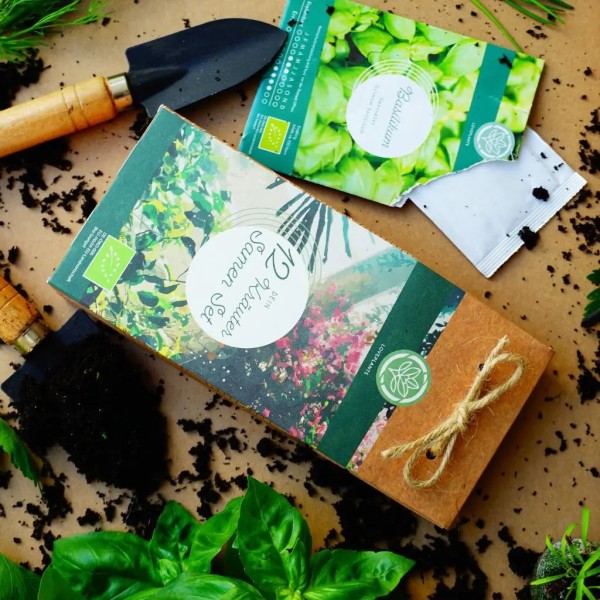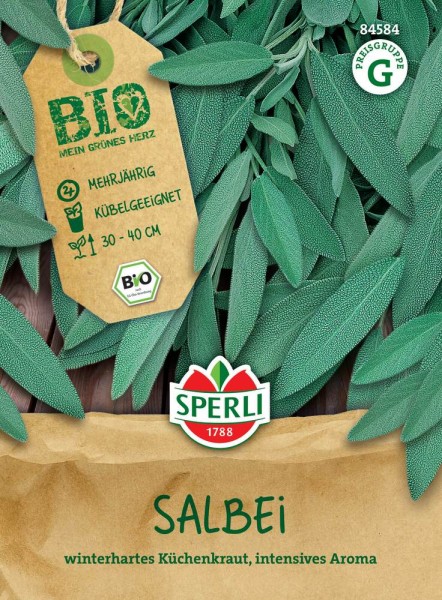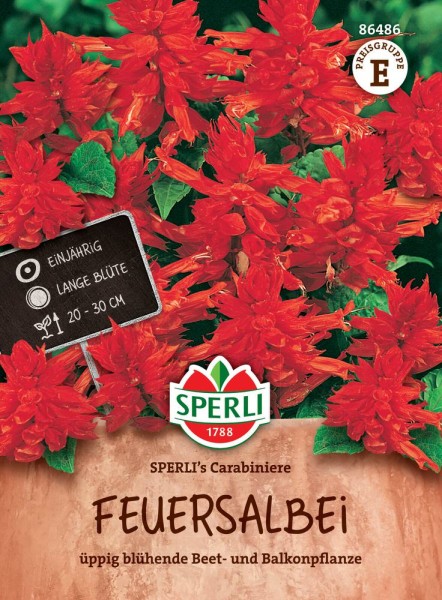Sage is considered to be one of the oldest and most widespread culinary herbs. It is used fresh and dried in the kitchen to season meat dishes, soups, herb butter, quark, and salads. Sage is also especially popular and well-known as a medicinal herb. The plant, with its grey-green, felt-like leaves, combines many good properties. It helps with colds and inflammations in the mouth and throat and is also considered to be sweat-inhibiting and appetizing. The botanical name ‘Salvia’ is no coincidence. It derives from salvare, the Latin word for cure. In addition, flowering sage is a beautiful sight, and it is useful as well; as a plant rich in nectar, it is a great haven for bees.
Having a sage plant in your herb bed is a real gain in many ways. In addition, the herb is very easy to care for and frugal. If you don’t have your own garden, you can also grow it in a container on the balcony or terrace.
Sage Varieties
The selection of plants of the genus Salvia is huge. There are several hundred varieties worldwide. They are annuals or perennials, hardy or sensitive to frost, have leaves of varying degrees of hairiness, roundness, and size. They flower in all possible colors: white, pink, pink and violet, red, yellow, and blue.
A classic variety is medicinal and kitchen sage with the botanical name Salvia officinalis. This short shrub, which can grow up to one meter tall, is perennial, and has oval to narrow, pointed leaves with downy hairs. As a rule, they are green to grey, but there are also varieties with marbled or golden yellow leaves. The color of the flower can also vary from white to pink and violet to blue.
The leaves of the clary sage (Salvia sclarea) are much more expansive. With its bright pink and white flowers, it is not only suitable for herb beds, but also looks great in borders. The same applies to Moroccan sage (Salvia maroccana) with its many lilac-pale blue flowers and crested sage (Salvia viridis) with its pink to violet bracts. If you want a real eye-catcher in your garden bed, you should go for Salvia splendens Sellow; it blooms fire-red and therefore rightly bears the name Fire Sage Carrabiniere.
Planting and Propagating Sage
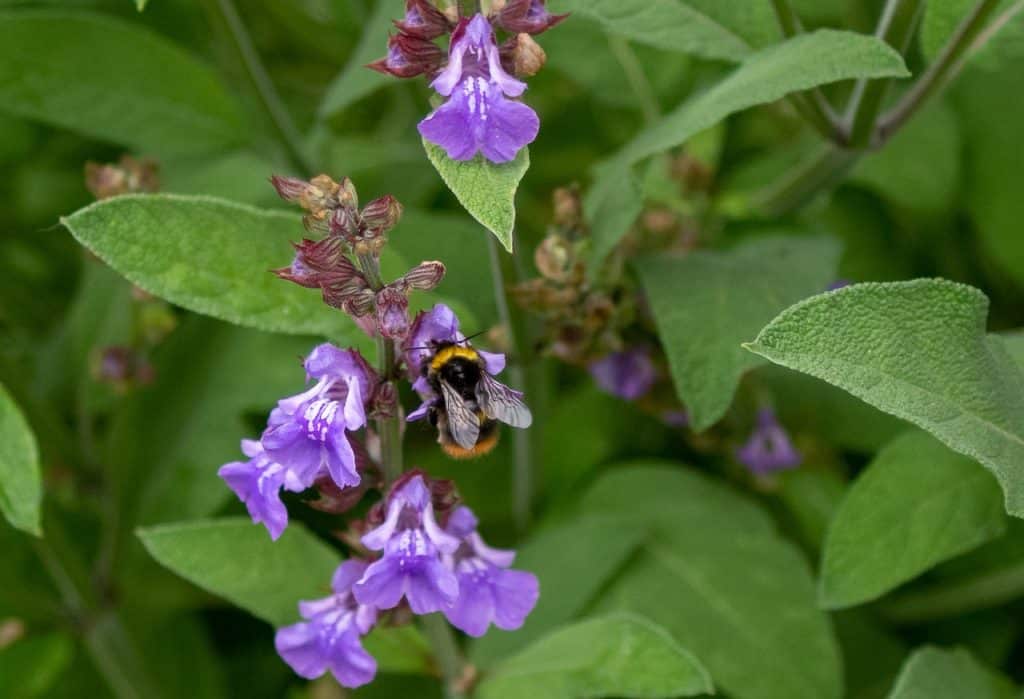
Depending on the variety, sage can be propagated in different ways. It is possible to grow both annual and perennial plants from seed, however, the conditions are not always the same. If you buy salvia seeds, please check the package carefully to see under which conditions they grow best.
Salvia officinalis, the classic kitchen sage, can be sown directly from May onwards. However, it is better to sow it a few weeks earlier at temperatures between 15 and 20 degrees Celsius, and then plant it outside as a small plant. You can start pre-cultivation in March. Make sure that you cover the seeds minimally or not at all with soil, but only lightly press them to the surface. Sage is one of the light-lovers. These plants need light to make the seeds sprout. This should be the case after about two weeks.
Perennial sage can also be propagated from the plant by taking cuttings. This is very simple. Cut a young shoot about ten centimeters long before flowering in summer. It should not have a flower base, only leaves. Now remove all leaves except the upper pair of leaves and plant at least half of the shoot in the cultivated soil. As soon as new shoots appear, the young plant can move into the bed. Planting from a cutting gives you young plants that have the same characteristics as their mother plants. Choose a sage from which you would like to have more plants.
Location and Maintenance
Sage can be found in many species and varieties all over the world. Its demands on soil and location are therefore just as different. Some cope well with the blazing sun, others thrive better in semi-shade. Some like lean soils, others need many nutrients, and some won’t mind a cold winter, while others will go in at the first signs of frost or even just last one season. This is why it’s best to find out in advance whether your favorite variety can cope with the conditions in your garden or on your balcony.
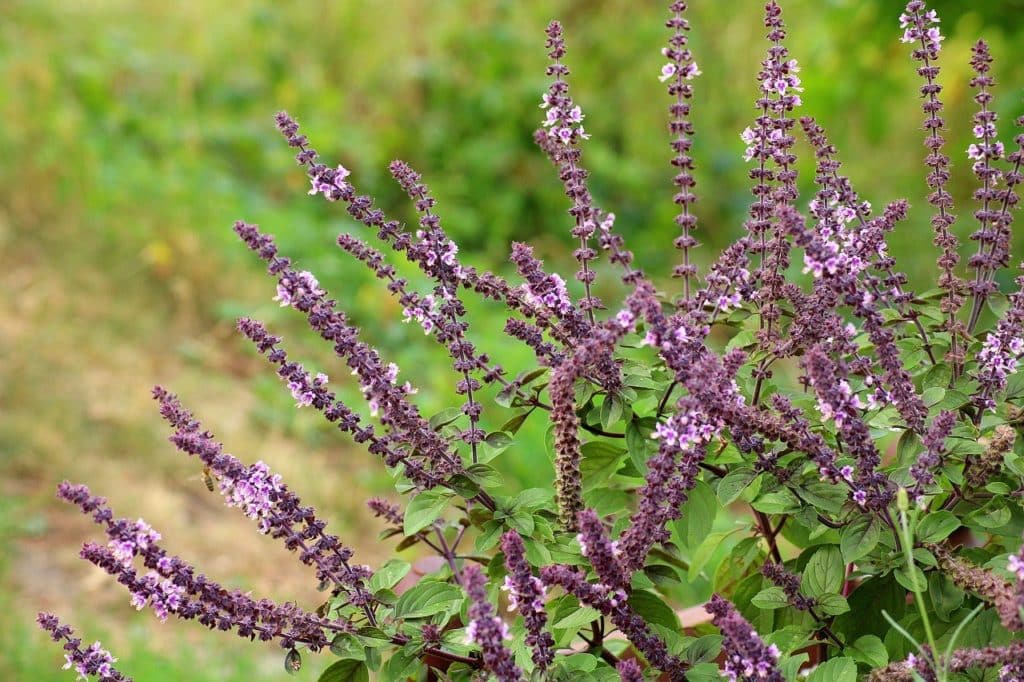
Salvia officinalis, the healing and kitchen sage, originates from the Mediterranean region. It prefers a sunny, dry location, and is easy to maintain. Apart from some compost in spring, won’t need to feed it for the rest of the year. You should also be cautious with watering. It does not like to be waterlogged. Salvia officinalis is a perennial shrub. As a rule, it can cope with a cold winter outdoors. Since it is woody, you should cut it back in spring, but only when new shoots appear. It flowers from June to August, depending on the variety, white, violet, pinkish red, or bluish. The nectar-rich flowers are not only edible, but also attract many insects. If properly cared for, sage is considered insensitive to disease, however, in spring and early summer it can be attacked by aphids, which target the soft shoots and flowering roots. Fortunately, you can easily remove them using natural methods.
Use, Harvest, & Conservation
This depends on what kind of sage you grow in the garden or on the balcony. The leaves of some varieties have a spicy aroma and go well with hearty dishes. Others taste rather sweet, so you can use them for fruit teas, sweets, and desserts.
The delicate, grey-green leaves of Salvia officinalis have a bitter, camphor-like taste that is not everyone’s cup of tea. Since the leaves also taste very intense, you should use them sparingly. With sage, you can flavor meat dishes, omelets, and herb butter. Unlike many other kitchen herbs, you can cook with it, and it will develop more of an aroma. Sage tea helps with sore throats and digestive problems, among other things. It is also considered antiperspirant.
You can harvest sage leaves all summer long by cutting whole shoots and picking the leaves. Don’t worry, the shrub sprouts fresh again after pruning. The months of May and June are considered optimal harvest times. Just before flowering, the leaves are most aromatic. This is the ideal time to stock up! To preserve them, dry the leaves in a warm, airy place until they no longer contain moisture. Keep them in a glass, preferably in a dark place. It’s important to know that sage does not lose its aroma and healing properties when preserved.

